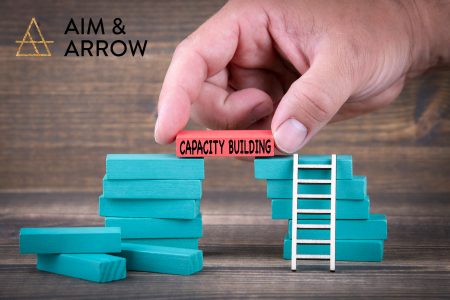The federal funding boom of the pandemic era is ending—and this moment is going to test what was built. But that’s the point: the partnerships, plans, and connective structures created in the last few years aren’t fragile. They’re durable, disciplined, and ready to be used.
That’s why this is a call not to retreat, but to sustain. We need to keep supporting smart, cross-sector collaboration. It works, it lasts, and it’s more essential now than ever.
The Biden era saw a wave of large-scale collaborative grants issued across sectors to fortify the country after COVID-19. Capacity-building grants in education, public health, economic development, and other areas were released—many of which my team and I have had the privilege to support.
Now, even with massive amounts of funding evaporating, the work seeded during that time isn’t going away. In fact, many sectors are better prepared to navigate what comes next because of it.
Infrastructure was built that didn’t exist before: new ways of working, stronger relationships, deliberate coordination, and shared tech. In a time of relative abundance, what emerged was durable, disciplined coordination—forged through the act of people coming together, tackling shared challenges, sitting in the same room, and articulating what success actually looks like. That kind of clarity and alignment becomes even more critical in a downswing, and this funding window made it possible in many places.
A couple of examples to highlight:
REACH Statewide — This Illinois initiative relied on ESSER funds. Over four years of planning, design, and high-touch execution, it fostered strong partnership-building and stood up a collective focused on supporting student resilience and mental health. The effort created a lasting, statewide framework and collaborative platform that will persist beyond this funding cycle, woven into the infrastructure schools use long-term.
Clean Tech Economy Coalition — Funded by the EDA’s Build Back Better Regional Challenge, Illinois’s collaborative process didn’t advance to Phase 2 implementation. Yet the Phase 1 planning grant created meaningful coordination around clean energy and positioned the state to think much more strategically about the sector. The relationships formed during that time remain active and aligned. That groundwork hasn’t gone away—and in regions that received implementation funding, we’re now seeing thriving new industries just three years later.
The lesson in the years ahead should not be that the social sector could have always operated leaner. It’s that during a moment of extraordinary public investment, the social sector did what it was designed to do: test, learn, adapt, and build. These alliances weren’t theoretical—they were built to hold weight. Capacity-building builds capacity. That’s the lesson.
It’s a call to action for, yes, the federal government—but also for states, cities, and philanthropies—to continue unlocking the kind of design and effective execution that collaborative planning makes possible. We need it now more than ever, powered by the vision and openness of creative funders and conveners.
When I consulted in the private sector, the classic response to structural downward pressure was to consolidate. So what’s the response to scarcity in the social sector? There is no luxury to dig in our heels. Grant cycles require more discipline than shareholders do.
Our version of consolidation is to partner. Partner smarter. Partner better. Reinforce the joinery. Tighten the interlocking intersections to ensure the support around the most vulnerable in our communities stays strong.

